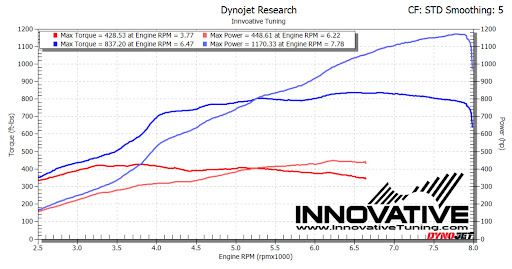Introduction
Torque (TQ) is a crucial factor in engine performance, affecting acceleration, towing capacity, and overall drivability. One of the most common ways to enhance torque output is by increasing boost pressure in a forced induction system. Whether using a turbocharger or a supercharger, increasing boost directly affects the torque curve of an engine. This article delves into how boost pressure influences the TQ curve and what factors come into play when modifying boost levels.
Understanding the Torque Curve
A torque curve represents how an engine’s torque output varies across different RPM (revolutions per minute) ranges. The curve provides insights into an engine’s powerband, efficiency, and performance characteristics.
Key Aspects of a Torque Curve:
- Peak Torque: The highest point on the curve, indicating the maximum torque output.
- Torque Band: The RPM range where the engine maintains a high level of torque.
- Slope and Shape: The way torque rises and falls with RPM changes, influenced by factors such as boost, fuel delivery, and airflow.
Role of Boost in Torque Generation
Boost pressure is the amount of additional air forced into the combustion chamber by a turbocharger or supercharger. More boost generally means more power and torque, but its effect on the torque curve depends on multiple variables:
- Engine Displacement: Larger engines may handle more boost without excessive strain.
- Turbocharger Size and Type: A larger turbo may provide more peak power but could introduce turbo lag.
- Fueling and Tuning: Proper fuel-air mixture and ignition timing are crucial for safe power gains.
- Intercooling Efficiency: Cooler intake air improves combustion efficiency and prevents detonation.
How Increasing Boost Alters the TQ Curve
1. Increased Peak Torque
Raising boost levels typically increases peak torque. Since torque is a function of cylinder pressure, additional boost means more compressed air and fuel, leading to higher combustion pressure and torque output.
Example:
- A naturally aspirated 2.0L engine may produce 200 Nm of torque.
- Adding a turbo with 10 psi boost could increase it to 300 Nm.
2. Shifting the Torque Band
Higher boost often shifts the torque curve to lower RPMs, depending on turbo sizing and tuning. Smaller turbos spool faster, delivering torque earlier, while larger turbos provide a stronger top-end performance but may introduce lag.
Scenario Comparison:
- Stock Turbo Setup: Peak torque at 3,500 RPM.
- Increased Boost: Peak torque achieved earlier at 2,800 RPM due to faster spool.
3. Broadening the Torque Curve
With optimized tuning, increasing boost can widen the torque curve, maintaining higher torque levels across a broader RPM range. This results in better acceleration and drivability, reducing the need for frequent gear shifts.
4. Risk of Torque Spikes
An uncontrolled increase in boost can lead to an aggressive torque spike, making power delivery unpredictable and potentially damaging drivetrain components. Proper tuning and boost control methods are essential to smoothen the torque curve and ensure reliability.
Factors to Consider When Increasing Boost
1. Air-Fuel Ratio (AFR) Adjustments
Running lean (too much air, not enough fuel) at high boost can lead to engine knock and damage. A proper AFR balance ensures combustion stability and efficiency.
2. Ignition Timing Optimization
More boost requires careful ignition timing adjustments to prevent detonation. Retarding ignition timing slightly under boost conditions can safeguard engine longevity.
3. Intercooling and Heat Management
Higher boost generates more heat, requiring better intercooling solutions. A high-performance intercooler helps maintain optimal intake air temperatures and prevents power loss due to heat soak.
4. Strength of Internal Engine Components
Stock pistons, rods, and crankshafts may not handle excessive boost without reinforcement. Forged internals and stronger head gaskets may be necessary for high-boost applications.
Tuning Strategies for Boost Optimization
- Boost Controllers: Electronic or manual boost controllers allow precise regulation of boost pressure to prevent spikes and maintain consistency.
- Aftermarket ECUs: Standalone or piggyback ECUs enable precise tuning of fuel maps, ignition timing, and boost levels.
- Dyno Testing: A dyno run provides real-world data on how the torque curve changes with increased boost, aiding in fine-tuning.
Case Study: Boost Increase and Torque Curve Analysis
Consider a 3.0L turbocharged engine with stock boost at 8 psi and peak torque of 450 Nm at 3,200 RPM.
After Boost Increase to 14 psi:
- Peak torque rises to 600 Nm.
- The torque curve expands, providing more mid-range power.
- Spool time improves, delivering torque earlier.
- Proper tuning prevents detonation and ensures drivability.
Conclusion
Increasing boost significantly impacts the TQ curve by enhancing peak torque, shifting the powerband, and broadening the curve for better performance. However, careful tuning, heat management, and drivetrain reinforcement are essential to prevent mechanical failure.
For professional tuning insights, visit GMRU Performance.
For more automotive and technical writing content, check out Big Write Hook.

















